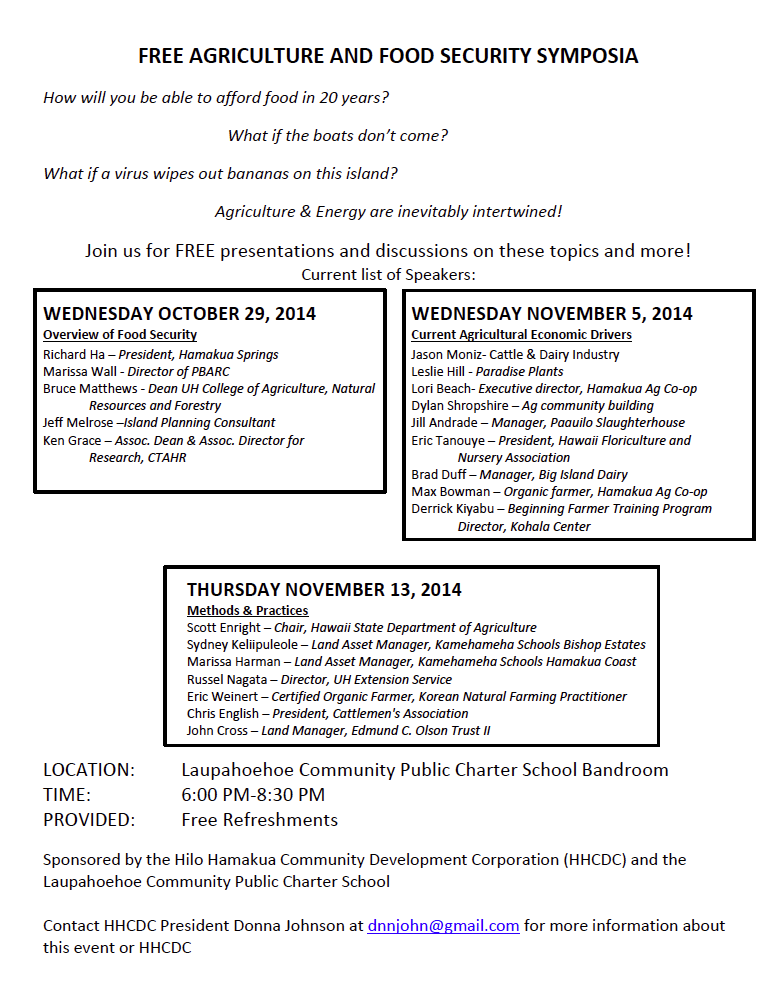Richard Ha writes:
We had a lot of visitors one day last week. All, like us, were very excited about the possibilities surrounding ag and energy at the farm. Agriculture and energy are inextricably intertwined.
The visit was arranged by Matt Hamabata, Chief Executive Officer of the Kohala Center, of which I am a board member. He brought researchers from Cornell University, as well as representatives from UH Hilo and Kamehameha Schools.
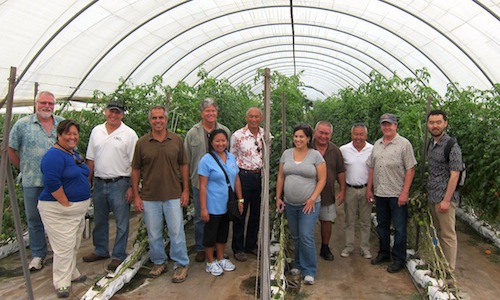
From UH Hilo, Cam Muir and consultant Greg Chun. From Cornell, Max Zhang and Robert J. Thomas. Matt Hamabata from Kohala Center. From Kamehameha Schools, Mahealani Matsuzaki, Neil Hannahs, Giorgio Caldarone, Sydney Keliipuleole, Llewelyn Yee and Marissa Harman.
This reservoir supplies all the irrigation water for our vegetables. The water comes down from an intermittent stream. Soon, the water pumps that move the water and pressurize the lines will be electrified from the old plantation flume.
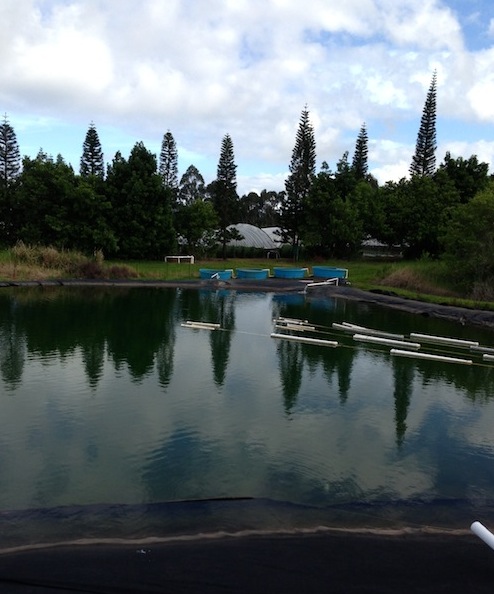
See the blue tanks in the distance? That’s a tilapia experiment, where we oxygenate the water by using falling water rather than electricity. This is another way to leverage the abundant water that falls on the farm: We get 2.3 billion gallons annually on our 600-acre farm.
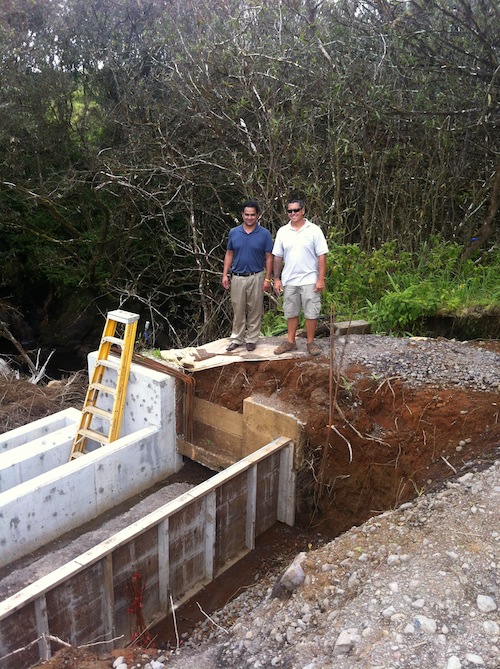
Construction of the head works: connecting up the old part of the flume with the new part. (Left) James Channels, produce buyer for Foodland Supermarkets and (right) Kimo Pa, farm manager at Hamakua Springs.
We took them up to the head works, where the old part of the flume system joins up with the new. As we looked downslope, someone mentioned how amazing it is to think that the sugar people moved the sugar cane to the mill by portable wooden
flume structures that they moved from field to field. We were standing about three miles upstream of the sugar mill.
Next we went to the hydro turbine shack to see where the water we borrowed 150 feet upslope is returned to the flume after energy is extracted. From there, overhead lines take the electricity to our packing house.

The turbine before
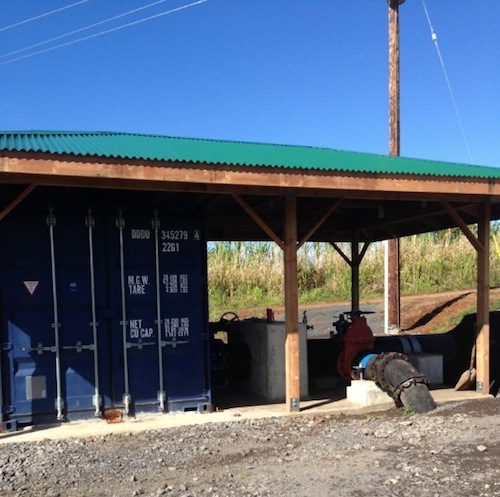
The turbine after
We have a vision of lining the south side of the flume with native trees. Their shadows would fall across the flume and suppress invasive species at the same time.
Back at the packing house, I told them about diversifying our produce mix. A papaya farmer wants to work with us, producing and labeling non-GMO papayas. Also, I visited an organic farmer in Opihikao yesterday. He is interested in getting heat-sterilized coconut coir to use as media for his certified clean ginger seed business. I told him I will keep him in the loop.
Later, Laverne Omori, the new Research and Development Director, came by with County Energy Coordinator Will Rolston. Vincent Kimura, of the INNOVI group, was at the farm helping us install an ozone food sanitation system. The beauty of this system is that we won’t have to use chemicals for sanitation treatment.
The only thing left over will be plain water.
Here’s a “before” picture with some previous visitors, Claire Sullivan and Steve Carey from Whole Foods.
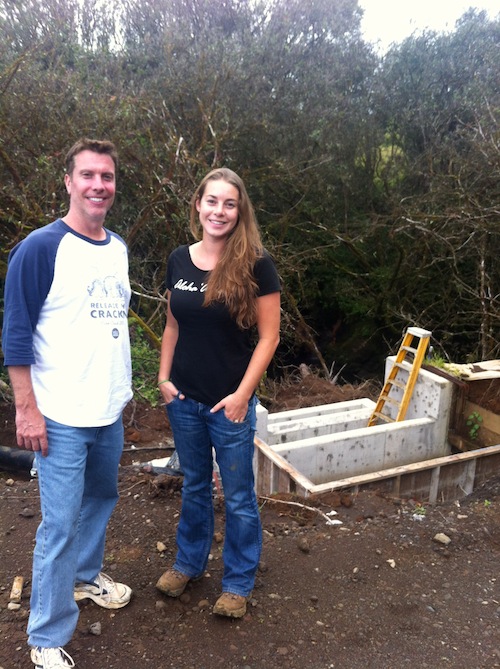
And this short video shows “after.”
We want to use the electricity we get from the river to help area farmers produce more food. The bottom-line, inescapable fact is that if the farmers make money, the farmers will farm.

